Magaasi Village

Beez Neez now Chy Whella
Big Bear and Pepe Millard
Thu 1 Oct 2015 22:37
|
Magaasi
Village
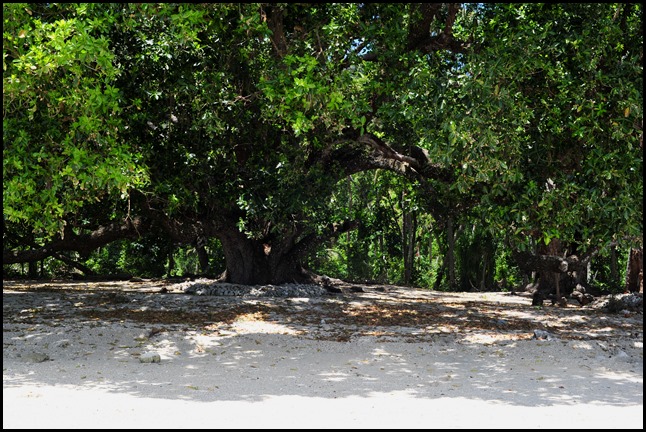 After our visit to Roi Mata’s burial
site we headed back to Efate Island but further north than we had started from.
From the boat we could see a massive tree and it was
beneath that tree that we sat and listened to more of the life of the great
chief, standing now as it did - according to the locals - in the 1600’s shading
the chief himself.
 Bear stands by the very big, elderly
tree
Roi Mata sent his fiercest looking
warrior to the surrounding tribes, and in the name of the chief told them to
attend a meeting. As is customary each village leader brought a gift, those from
the hills brought coconuts, by the sea turtles, clams, octopus, from the
lowlands yam, cassava, kava and so under this very tree Roi Mata told these
leaders that the gift they had brought would now be their emblem. From that day
on no intermarrying would be allowed. A coconut could marry an octopus and so
on. The biggest tribe to this day are the coconuts and still hold the rules set
down that day. There is a story in recent times of a coconut man on Lelepa
Island who married a coconut lady and their three children are ‘abnormal’
thereby reinforcing ‘the word’.
 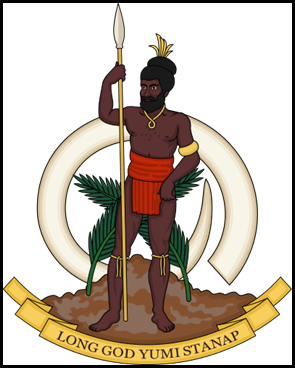 Perhaps the greatest influence Roi Mata had at the time was
bringing peace between the warring cannibalistic tribes. Some tell us he is
honoured on the nations Coat of Arms which reads In
God We Stand written in Bislama [95% of this language is based in English but
when spoken fast, sounds gobbledygook, with the odd recognisable
word].
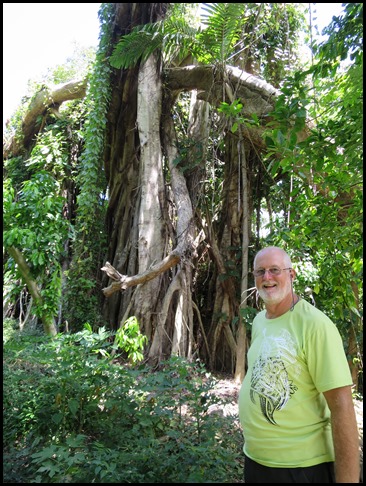 We followed Topei along a thickly wooded path until we reached
Roi Mata’s favourite banyan tree, here he would sit
with his elders and discuss village matters. Every major storm that hits the
area brings worry but the tree has always managed to stay
upright.
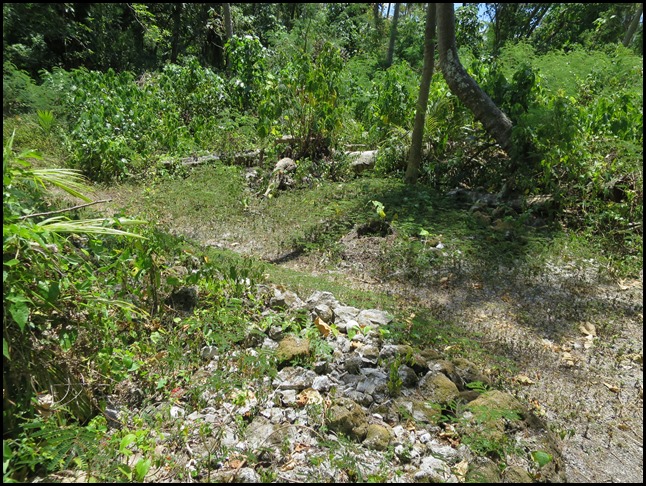 We reached a sort of clearing, to our left a pile of stones, to our right a series
of logs – as soon as we had passed we were in Roi Mata’s village. Eerily
silent.
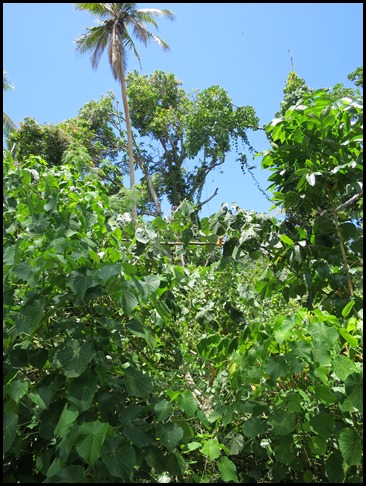 Topei stopped and pointed to the tree in
the middle. “This is where Roi Mata’s only son and only child was buried.
He is now the curled skeleton seen resting between his father’s legs at the
burial site”. He went on to tell us that many from his village won’t walk
through here as they think the spirits walk and they are too
afraid.
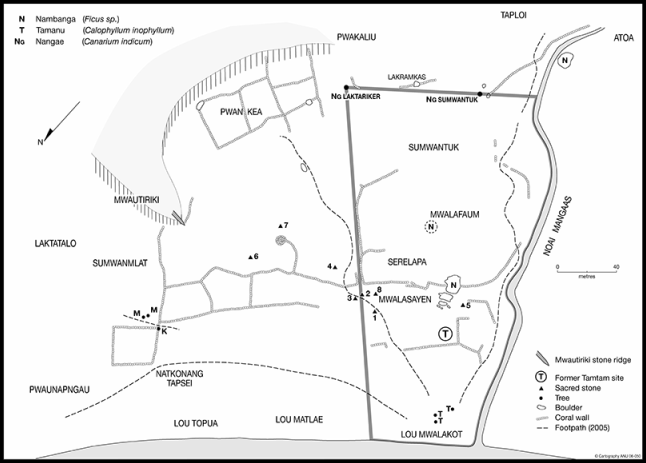 The map showing Magaasi on the
right, to this day no one lives here – not since Roi Mata’s
death.
Magaasi (or Mangaasi) is the former
residence of Roi Mata. It can be reached either by boat or by land from
Mangaliliu. Nestled between the beach of M̃alakot and the steeply climbing ridge
behind, the area is still divided by the remains of stone walls, which
demarcated the ‘yards’ of individual family residences. A narrow corridor runs
from M̃alakot, which was Roi Mata’s personal ‘passage’ through the reef to the
beach, up to M̃alaseien, Roi Mata’s dance ground, where his tamtam slit drums
were located, through his residential yard of M̃alafaum to his personal house at
Sum̃antuk. Several ancient trees, including the tamanu (Calophyllum inophyllum)
trees at M̃alakot, a giant nambanga (banyan) tree at M̃alaseien, and a towering
nangae (Canarium) tree at Sum̃antuk, are all said to date from the period of the
last Roi Mata, the name died with him.
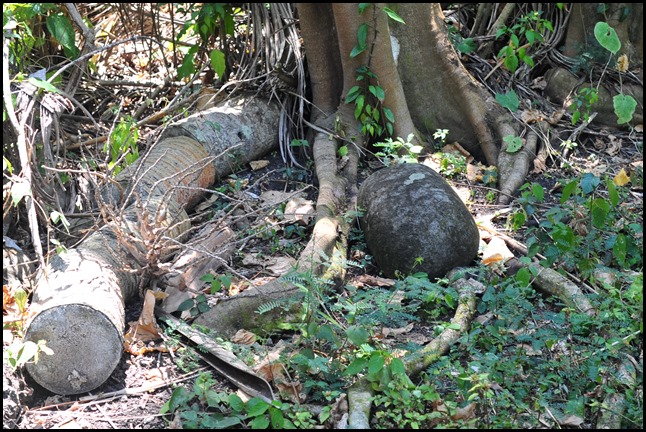 Several sacred stones, including Roi Mata’s personal stone, are still located in situ at
Magaasi. Archaeological excavations in the Magaasi area have revealed an
exceptionally long sequence of almost continuous use or occupation, from at
least 2900 years before the present, until its abandonment in about 1600 or some
say 1700 AD.
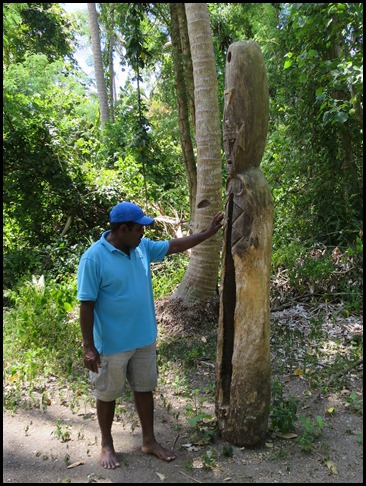 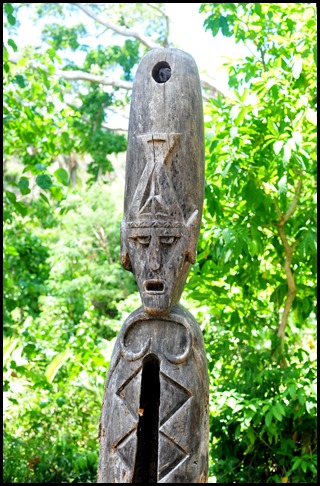 The tamtam – slit
drums, whether decorated or not, have a significance to Vanuatu's traditional
economy and society:
they can be a sign of a man's wealth and social status within the political
system of graded societies. The drums are sometimes found at ceremonial
dance grounds and other gathering places. They have been used for dance rhythms,
but also for signalling purposes. A tamtam is said to hold spirits, some
good, some bad, and are often posted upright at the perimeter of a property or
outside a house as protection. Topei pulled two sticks from the slit and
demonstrated the rhythm used to call people to a dance and for someone who has
died. The deep, booming noise was incredible and can be heard for miles. Like a
lit beacon, as soon as one tribe hears a tamtam they hit theirs in the same beat
and so a message can travel across the islands.
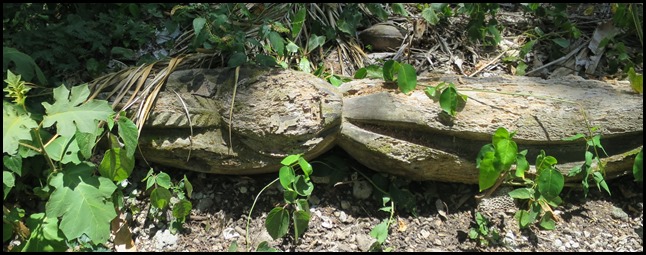 Sadly, Cyclone Pam toppled the matching tamtam.
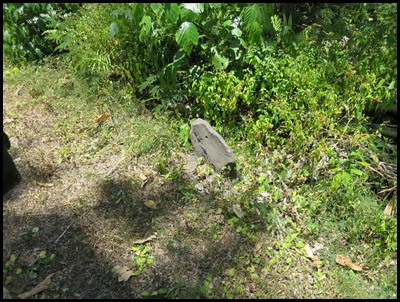 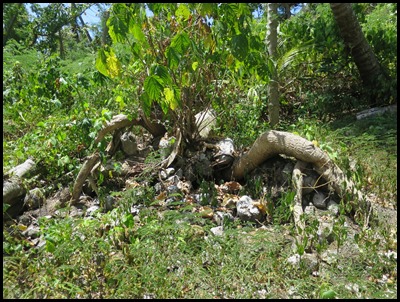 We left the village through another
exit marked with a stone on one side and a tree root on the other.
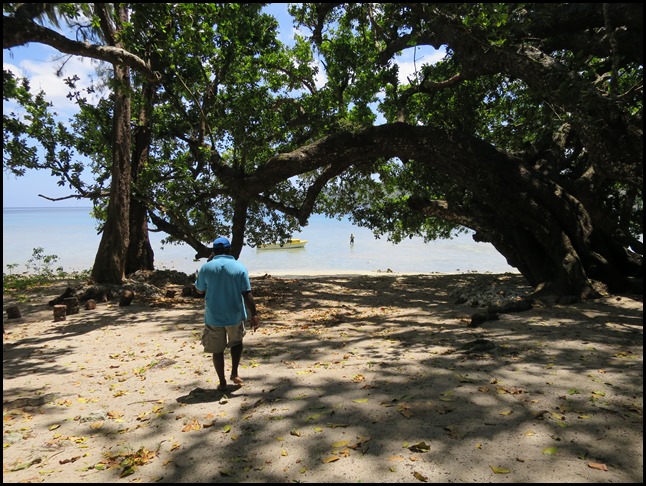 We followed Topei back to the beach where Captain was patiently
waiting.
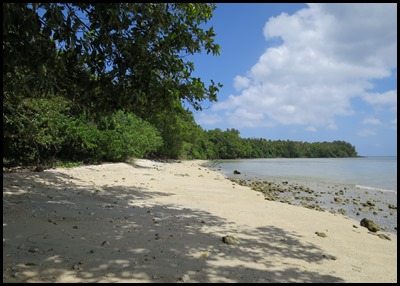 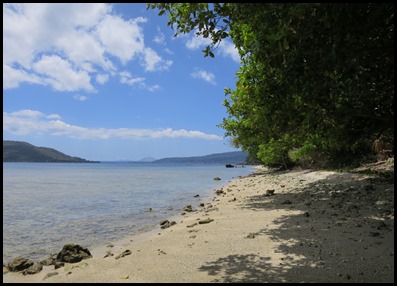 Looking left
and looking right. Now back to Topei’s village
for lunch.
ALL IN ALL REALLY INTERESTING TO WALK THROUGH
WEIRD THAT THE VILLAGE IS
GONE
|